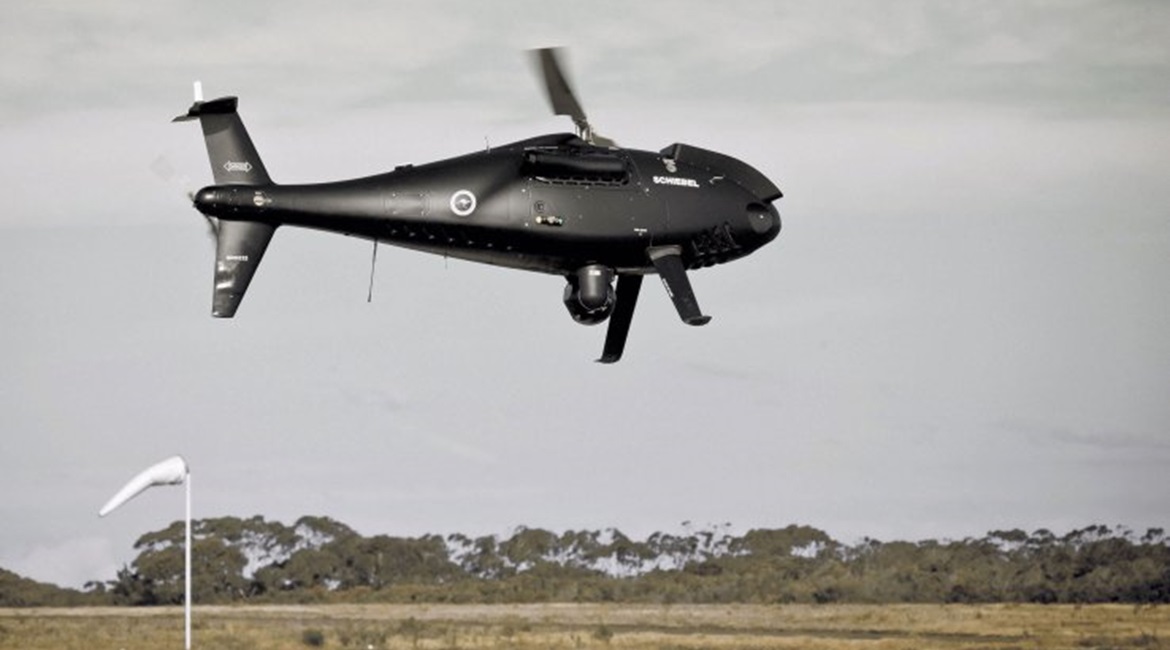
Austrian unmanned aircraft systems (UAS) manufacturer Schiebel is developing a new JP-5-powered heavy fuel engine for its S-100 Camcopter after its initial choice of heavy fuel engine failed to meet endurance requirements set by the Royal Australian Navy (RAN).

Schiebel is developing a new heavy fuel engine for its S-100 Camcopter (seen here) to meet endurance requirements set by the RAN. (Schiebel)
Andrew Watson, general manager at Schiebel Pacific, confirmed to Jane’s on 2 April that two JP-5-powered S-100 rotary-winged unmanned aerial vehicles (UAVs) contracted by the RAN as lead customer in December 2016 had been replaced by two aviation gasoline (avgas)-powered S-100s after the former failed to meet the RAN’s endurance requirement of six hours with a 20 kg payload.
The air vehicles had been acquired to meet the RAN’s interim maritime vertical take-off and landing (VTOL) requirements. The contract included three years of technical support, and options for sensor and platform upgrades.
The RAN started shipborne evaluation trials of the two heavy-fuel variants in 2018, replacing a single on-loan S-100 that was powered by a Diamond piston engine, the aviation gasoline fuel of which was deemed unsuitable for shipborne evaluations because of its relatively low flashpoint.
The Diamond engine was replaced by Schiebel with the two-disc Rotron 600, sourced from UK company Rotron and modified in-house. The Rotron engine accepts JP-5, a kerosene-based fuel with a flash point above 60° C and specified by the RAN for safety reasons.
Watson said endurance with the Rotron 600 had peaked during the 2018 trials at about five hours with a 20 kg payload. It had been expected to at least equal – if not better – the six hours delivered by the Diamond-powered variant.
Looking to read the full article?
Gain unlimited access to Janes news and more...




